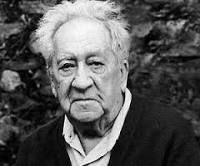

Aaron Siskind
1903 - 1991
Aaron Siskind was born on December 4, 1903 in New York. He was the son of Russian Jewish immigrants and the fifth of six children. After receiving his Bachelor of Social Science degree from College of the City of New York in 1926, he went on to teach high school English for 21 years in the New York public school system. His first loves were music and poetry, but he took an interest in photography in 1930 (when he received his first camera as a going-away present before his honeymoon trip to Bermuda), and began his photography career as a documentarian in the New York Photo League in 1932. From 1936 to 1940 he oversaw the League's Feature Group as they created documentary photo-essays of political import including Harlem Document, Dead End: The Bowery, Portrait of a Tenement, and St. Joseph's House: The Catholic Worker Movement. In the early 1940s, his work shifted to the abstract and metaphoric as Siskind cultivated friendships with such Abstract Expressionists as Franz Kline, Barrett Newman, Adolph Gottlieb, and Mark Rothko, and began to exhibit work at the Charles Egan Gallery which specialized in Abstract Expressionism.
On the invitation of Harry Callahan, Siskind joined the faculty of the Institute of Design in Chicago in 1951, taking over as head of the photography program when Callahan left in 1961. In 1963 he helped found the Society for Photographic Education. Siskind and Callahan, famous for their synergy as professors and photographers, were reunited beginning in 1971 when Siskind left the Institute of Design for the Rhode Island School of Design where Callahan was a professor and Siskind continued to teach until his retirement in 1976. Siskind traveled broadly, in particular making multiple trips to Mexico and Italy, including a period spent in Rome during his 1966 John Simon Guggenheim Memorial Fellowship. Siskind died in Providence, Rhode Island on February 11, 1991 at the age of 87. The Aaron Siskind Centennial Celebration took place during 2003-2004 with exhibitions at more than a dozen institutions across the country, including the Museum of Contemporary Photography, each devoted to a different period or theme of the photographer's life and work.
Architecture was one of Aaron Siskind's principle photographic concerns during the 1950s. For instance, from 1952 to 1953 he and his students from the Institute of Design were engaged in an ambitious documentation of the Adler and Sullivan buildings in Chicago. Likewise, a similar project involved photographing the interiors of Mies van der Rohe's buildings.
Highly formal, yet concerned with their subject as well as the idea they communicate, The Pleasures and Terrors of Levitation photographs depict the dark shapes of divers suspended mid-leap against a blank white sky. Shot with a hand-held twin-lens reflex camera at the edge of Lake Michigan in Chicago, the balance and conflict suggested by the series' title is evident in the divers' sublime contortions. During the 1950s, Siskind's primary subjects were urban facades, graffiti, isolated figures, and the stone walls of Martha's Vineyard. Graphic in form, the subjects of each of these series resemble script, reflecting Siskind's interest in musical scores and poetry.
Siskind and Abstract Expressionist painter Franz Kline had been friends for years when, in 1961, Siskind first thought of doing a photographic homage to Kline. Siskind had been driving through San Luis Potosi, Mexico when he chanced upon a wall with random brush strokes that reminded him of Kline. Kline died the following year. Siskind did not actually begin the homage until December 1972 on another car trip in Mexico, this time through Jalapa. Homage to Franz Kline is composed of six groups of work, each identified by the place and time in which they were shot and, despite overarching themes, each with a distinct character.
Text © Museum of Contemporary Photography, 2018












